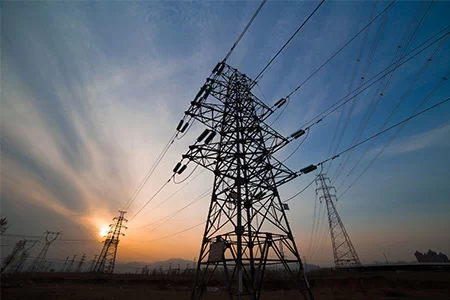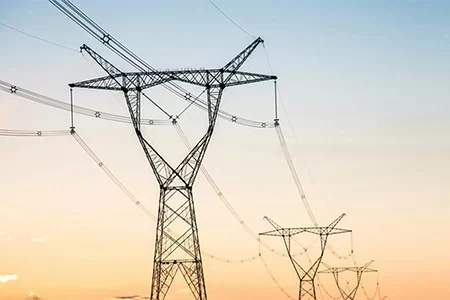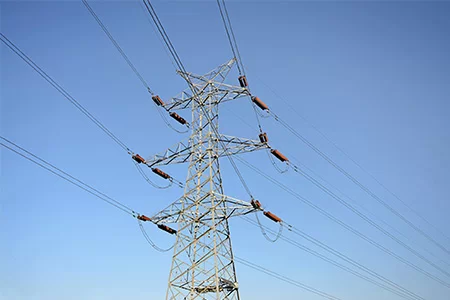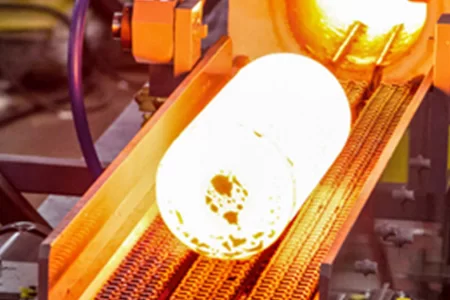HULK Metal will continuously update the dynamics of the metal products industry, to support your decision-making.

Hulk Metal News
Share what's new
-
Home>
-
Blog>
-
Technology>
Jaw Wire Grip Classification and Application: Performance Characteristics and Quality Assurance Analysis

Classification of Jaw Wire Grip
As a key cable clamping tool, Jaw Wire Grip plays an indispensable and important role in power transmission, communication construction and engineering installation. According to the different clamping objects, Jaw Wire Grip can be divided into conductor clamps, ground wire clamps, optical cable clamps and wire rope clamps. The design and application of each clamp are optimized for specific needs to ensure reliable clamping force and safety during construction and use.
Conductor Grip
Conductor grips are specially used to clamp conductors in transmission lines. Since the conductor material is usually aluminum, copper, or its alloy, the design of the conductor clamp needs to meet the following characteristics:
Precise clamping force: Made of high-quality alloy steel material, heat-treated to enhance hardness and toughness, it can firmly clamp the conductor without damaging the surface.
Widely applicable: openings of different specifications and sizes are designed to meet the use requirements of various conductor diameters.
Lightweight and durable: Lightweight, easy to carry, and with high fatigue resistance, suitable for long-term and frequent operation.
This type of wire gripper is widely used in the installation, inspection, and maintenance of power transmission lines and is an important auxiliary tool for power engineering.
Overhead Ground Wire Grip
The ground wire gripper is mainly used to clamp the ground wire in overhead transmission lines. The ground wire is usually made of steel core or aluminum-clad steel and has a high tensile strength. Therefore, the structure of the ground wire gripper must have the following characteristics:
High-strength clamping: It can adapt to the high hardness material of the ground wire to ensure stable clamping during operation.
Anti-slip design: The precision-machined clamping structure is used to effectively prevent the ground wire from slipping during operation.
Corrosion resistance: For outdoor working environments, galvanizing or surface treatment processes are used to enhance corrosion resistance.
This type of wire gripper plays an important role in the connection, adjustment and maintenance of overhead lines and is a key tool to ensure the safe operation of transmission lines.
Optical Ground Wire Grip
The optical cable gripper is a special tool designed for OPGW (optical composite overhead ground wire). OPGW combines the functions of communication and ground wire. Its structure is complex and its surface is relatively fragile. The following factors should be fully considered in the design of the optical cable gripper:
Flexible clamping: Through special clip materials and structural design, the clamping force can reduce the indentation and damage to the surface of the optical cable.
Precise adaptation: Customized design is provided according to the various specifications of OPGW to ensure a close fit between the optical cable and the gripper.
Lightweight operation: The overall design is simple and efficient, suitable for construction workers to use easily in high-altitude operations.
Optical cable grippers are widely used in scenes such as communication base station construction and power transmission line transformation and are important equipment in high-tech engineering construction.
Wire rope gripper (Steel Wire Grip)
Wire rope grippers are professional tools for clamping wire ropes, mainly divided into anti-twist wire rope grippers and round strand wire rope grippers. These two types are designed according to different wire rope structural characteristics to meet diverse engineering needs.
Anti-twist wire rope clamp
Anti-twist wire rope is widely used in lifting equipment, hoisting, and traction operations. Its unique structural design avoids the rotation and kinking of the wire rope during use. Therefore, the anti-twist wire rope clamp needs to have the following characteristics:
Strong anti-rotation ability: Design a specific clamping method to effectively prevent the clamping instability caused by the rotation of the wire rope.
High load-bearing capacity: Use high-toughness carbon steel, through hot die forging and tempering treatment, to ensure reliability under large load conditions.
Durability: The anti-twist wire rope clamp is treated with color zinc plating on the surface to improve oxidation resistance and wear resistance.
Round strand wire rope clamp
Round-strand wire rope is widely used in building hoisting, bridge construction, and shipbuilding. Its evenly distributed wire structure requires a specially designed clamp to provide reliable clamping:
Targeted clamping design: The internal clamping structure of the clamp can fit tightly with the round strand wire rope to ensure that the wire rope is not flattened or damaged when force is applied.
Multi-specification adaptation: Standardized and customized models are provided according to round strand wire ropes of different diameters.
Convenient operation: The humanized design facilitates construction workers to clamp and loosen quickly, improving construction efficiency.
Comprehensive analysis of three types of inspections
As a professional jaw wire grip manufacturer, HULK Metal is well aware of the importance of product inspection to quality and safety. Every wire gripper must undergo a strict inspection process from processing to delivery to ensure its stable performance and reliable quality. The following is a detailed analysis of wire gripper inspection, including factory inspection, type inspection, and regular inspection.
Overview of inspection types
According to different stages and purposes, the inspection of wire grippers can be divided into three types: factory inspection, type inspection and regular inspection. These inspections are closely linked to each other, and together they guarantee the performance reliability, and quality consistency of wire grippers from production to actual use.
Factory inspection
Purpose and requirements
Factory inspection is the last checkpoint in the production process of wire grippers. Only after passing the inspection can the product be shipped with the corresponding product certificate and certification documents. This process is designed to ensure that each batch of products meets the established quality standards and meets the special needs of users.
Inspection scope and content
Appearance inspection
Each batch of wire clamp products must undergo a comprehensive appearance inspection. Appearance inspection includes surface quality, dimensional tolerance, and coating quality to ensure that the product is defect-free, undamaged, and the appearance meets the design standards.
Load test
In factory inspection, the load test is one of the key links. The sample ratio of the load test varies according to the rated load of the product:
For wire clamps with a rated load of less than 70kN, the number of samples will not be less than 30% of the batch.
For wire clamps with a rated load of 70kN and above, the number of samples will not be less than 50% of the batch.
This strict ratio requirement ensures the reliability of the product's safety performance in actual use.
Special requirements of users
If special inspection requirements are proposed by customers or supply and demand agreements, they must be included in the factory inspection. For example, wire clamps used in special environments may require corrosion resistance or high-temperature performance tests.
Type inspection
Applicable scenarios
Type inspection is usually carried out for significant changes in product design, process or production conditions to verify whether the product still meets the standard requirements. Type inspection is required in the following situations:
Structural, material, or process changes
If there are major changes in product structure, material selection or process, type inspection is required to confirm the rationality and safety of the change when it may affect performance or quality.
Suspension and resumption of production
If the product is discontinued for more than 1 year, type inspection is required to confirm whether the production conditions remain at the original level when production is resumed.
Regular or cumulative production inspection
After formal production, a comprehensive inspection is carried out periodically according to a certain cumulative production or time to ensure continuous qualification.
Quantity and process of samples
The number of samples required for type inspection shall not be less than 3, and these samples shall be randomly selected during the actual production process to ensure the representativeness of the inspection results. Inspection items include but are not limited to:
Product load limit
Torque performance
Material mechanical properties
Surface treatment quality
The results of type inspection will directly affect whether the product can continue to be produced and sold, and is a key means to verify product quality.
Periodic inspection
Scope of application
Periodic inspection is mainly for in-service wire clamps, and its purpose is to ensure the safety and reliability of the product in long-term use through periodic inspection. It is particularly suitable for situations where the wire clamp is used in high-risk or high-intensity working environments, such as power line stringing, bridge construction, etc.
Inspection cycle and project
Inspection cycle
The period of regular inspection is usually no more than 1 year, and the inspection interval can be shortened according to factors such as usage intensity and environmental conditions.
Inspection content
Check whether the appearance of the wire clamp has signs of wear, cracks, or corrosion;
Carry out load inspection to confirm whether the load limit of the product meets the initial standard;
Test the clamping force and torque performance to ensure the firmness of the wire clamp in use.
Importance
Regular inspection can not only extend the service life of the product, but also prevent potential accidents caused by equipment aging, and ensure construction safety and project quality.
Quality management and quality assurance services
In order to ensure the effective implementation of the three inspections, our company has adopted the following management measures:
Advanced testing equipment
Equipped with precision testing instruments, including high-load test benches, metallographic microscopes, etc., to meet various inspection needs.
Professional testing team
The testing team is composed of experienced technicians who ensure the accuracy and authority of the test results.
Strict inspection process
All inspections are carried out in accordance with the requirements of the ISO 9001 quality management system, and comprehensive records are kept during the production process to ensure traceability.
Warranty service commitment
Our highlight is the warranty service. During the warranty period, if there is a failure caused by quality problems, we will respond quickly and provide customers with repairs, replacements or other solutions. In addition, our after-sales team is on call at any time to provide technical support and usage guidance to ensure that customers use it without worry.
The three inspections are important cornerstones to ensure the quality of Jaw Wire Grip products. From factory inspection to type inspection to regular inspection, each step reflects our commitment to customer safety and quality. By strictly implementing these inspection processes, we can provide customers with high-strength and high-reliability wire gripper products to help the smooth development of various engineering projects.
Article Navigation
Article Navigation
Industries
Foundries
-

September.14, 2024
Types of Jaw Wire Grip and Suitable Use Scenarios
READ MORE
-

September.13, 2024
Cable grip VS Wire Grip Comprehensive Detailed Analysis
READ MORE
-

September.12, 2024
Do you know the comprehensive analysis of wire grip puller?
READ MORE
-

July.03, 2024
What are the processes of hot forging?
READ MORE






